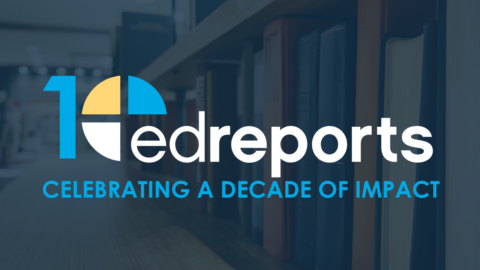10 Years of EdReports: Empowering Educators With Evidence
Lessons learned and progress made over 10 years of curriculum reviews and advancing quality materials. Plus, the work ahead to support educators and students.
Related Resources
article
EdReports: A Key Tool in a Comprehensive Curriculum Strategy
Why states must pair independent reviews with a holistic approach to curriculum adoption that centers teachers in decision-making and prioritizes local needs.
article
EdReports’ Updated 2.0 Review Criteria for K–12 Comprehensive Materials
EdReports’ newly-updated review criteria cover K–12 instructional materials for ELA, math, and science plus dedicated tools for evaluating MLL supports.
news
EdReports Celebrates 10 Years of Impact
Reflecting on a decade of progress in curriculum quality with a new interactive webpage and enhanced report labeling.


